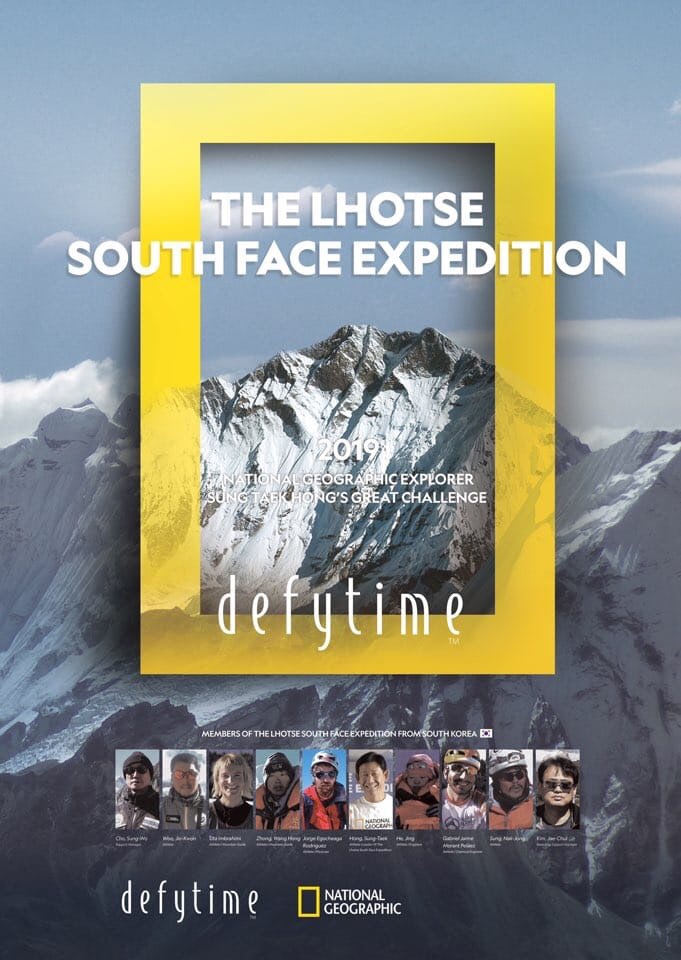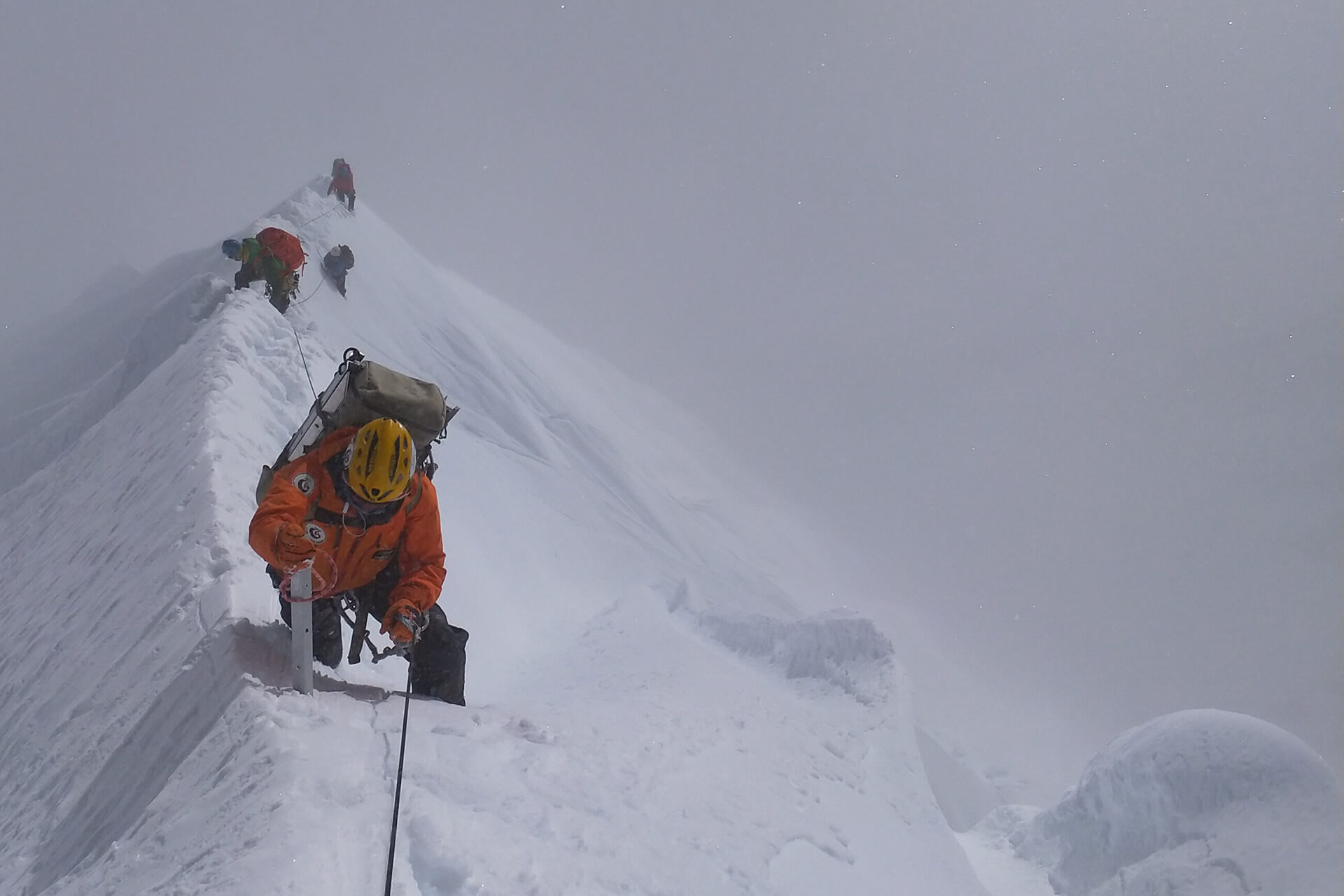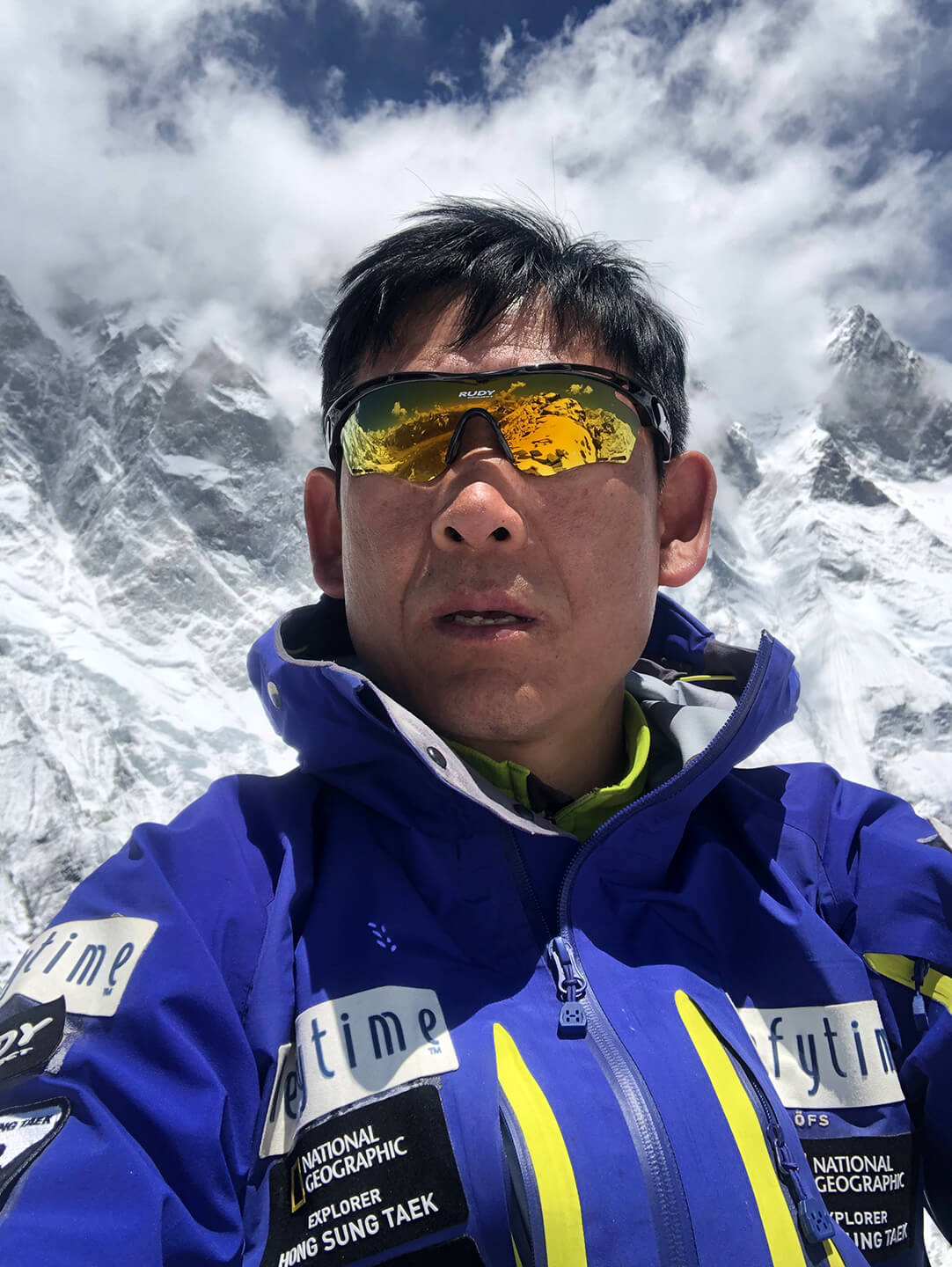“It is my dream to solve the problem that the mountain climbers of the world have not solved, by climbing the south face to the top of the mountain of Lhotse.”
– Hong, Sung-Taek
“It is my dream to solve the problem that the mountain climbers of the world have not solved, by climbing the south face to the top of the mountain of Lhotse.”
– Hong, Sung-Taek


In 2019 Defytime met the challenge of Hong, Sung-Taek in sponsoring his expedition to climb the notoriously difficult southern ice wall to the summit of Lhotse in the Himalayas. Success was not to be, but we congratulate Captain Hong and his team for their courageous attempt, and we feel honoured to have been part of the adventure. As Defytime pushes onward to find the ultimate anti-aging treatment we are inspired by the determination of Hong who does not know how to give up.
Lhotse south face is well known among mountaineers as one of the most difficult to climb. This requires ascending a 3,300 meter (11,000 foot) wall of ice and rock that is often vertical. While preparing for the climb Hong described some of the challenges ahead: “It is rare that two feet touch the ground, there is almost no flat place. If the weather gets warm, snow and ice melt and frozen rocks fall off. When the weather is cold, the rocks are frozen together. Even small rocks are very dangerous when they fall from 2,000 meters above. At dawn, there is less risk of rockfall due to the cold. When the sun is shining, the rock falls off even after only one hour. I usually start climbing around 1 a.m. and do not move during the day if possible.”
This was Hong, Sung-Taek’s sixth attempt and the first time that the Korean climber tried the wall in spring, rather than in the post-monsoon season. Over a period of two months the expedition set up five successively higher camps on the south face, before striking for the summit. Strong wind, snow, and then an avalanche that almost swept the climbers away near Camp 3 forced the team to retreat from around 7,700m, between C3 and C2. After the close call, almost all members decided to turn around. Only Hong and five Sherpas remained. The six climbers braved deteriorating weather as they continued toward the summit, before ultimately deciding to abandon the mission. However, Hong is not yet finished with Lhotse and plans to challenge the mountain again.
“If this expedition succeeds, I think it will be a valuable experience that I will never forget, and if not, I will have no regret because I did my best.”
– Hong, Sung-Taek
This was Hong, Sung-Taek’s sixth attempt and the first time that the Korean climber tried the wall in spring, rather than in the post-monsoon season. Over a period of two months the expedition set up five successively higher camps on the south face, before striking for the summit. Strong wind, snow, and then an avalanche that almost swept the climbers away near Camp 3 forced the team to retreat from around 7,700m, between C3 and C2. After the close call, almost all members decided to turn around. Only Hong and five Sherpas remained. The six climbers braved deteriorating weather as they continued toward the summit, before ultimately deciding to abandon the mission. However, Hong is not yet finished with Lhotse and plans to challenge the mountain again.
The project has been filmed by National Geographic and is scheduled to air in 2019 as a documentary.


The project has been filmed by National Geographic and is scheduled to air in 2019 as a documentary.
LHOTSE
Located in the Himalayas, Lhotse is the fourth highest mountain in the world at 8,516 metres (27,940 ft), after Mount Everest, K2, and Kangchenjunga. The summit is on the border between Tibet of China and the Khumbu region of Nepal. Although several mountaineers have climbed Lhotse, no one has ever ascended through the south face. Lhotse’s south face is a vertical ice wall that requires climbing up to 3,300m to the summit from the base camp located 5,200m above sea level. It is considered to be one of the most challenging and dangerous climbs in the Himalayas.

LHOTSE
Located in the Himalayas, Lhotse is the fourth highest mountain in the world at 8,516 metres (27,940 ft), after Mount Everest, K2, and Kangchenjunga. The summit is on the border between Tibet of China and the Khumbu region of Nepal. Although several mountaineers have climbed Lhotse, no one has ever ascended through the south face. Lhotse’s south face is a vertical ice wall that requires climbing up to 3,300m to the summit from the base camp located 5,200m above sea level. It is considered to be one of the most challenging and dangerous climbs in the Himalayas.
HONG, SUNG-TAEK
Hong, Sung-Taek is a mountaineer, adventurer, explorer and author from South Korea. He is currently a National Geographic Explorer supported by a National Geographic explorers program and a principal of KSAF Mountaineers Academy. He is renowned for reaching all the Three Poles and crossing the Bering Strait and Greenland for the first time. He summited Everest in 1995, skied to the South Pole in 1994 and walked to the North Pole in 2005. He also crossed Bering Strait by foot in 2012 (official) and crossed Greenland by dog sledding in 2011.


HONG, SUNG-TAEK
Hong, Sung-Taek is a mountaineer, adventurer, explorer and author from South Korea. He is currently a National Geographic Explorer supported by a National Geographic explorers program and a principal of KSAF Mountaineers Academy. He is renowned for reaching all the Three Poles and crossing the Bering Strait and Greenland for the first time. He summited Everest in 1995, skied to the South Pole in 1994 and walked to the North Pole in 2005. He also crossed Bering Strait by foot in 2012 (official) and crossed Greenland by dog sledding in 2011.